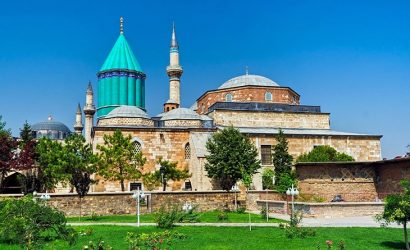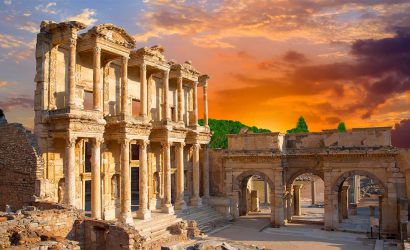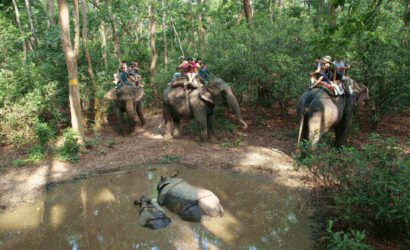GENERAL INFORMATION: The goal of archaeology is to understand how and why human behavior has changed over time. Archaeologists search for patterns in the evolution of significant cultural events such as the development of farming, the emergence of cities, or the collapse of major civilizations for clues of why these events occurred. Our ‘Archaeology Tour’ package includes the points Curzon hall, Lalbagh fort, Ahsan manjil, Dhakeshwari temple, Star mosque, Armenian church, Language martyrs’ memorial, Varendra research museum, Puthia, Mahasthangarh, Paharpur, Gaura, Bagha mosque, Sixty domed mosque, Nine domed mosque, Tomb of hazrat khan jahan ali (r:). Hope that, you will get a memorable experience from this trip.
Overview
OVERVIEW: This is the brief discussion about the points of this package. CURZON HALL – This structure was built in 1904. Meant to be a town hall and was named after Lord Curzon, the then British Viceroy in India. It was used as such till 1911, when the partition of Bengal was annulled. Following the annulment of partition in 1911 it was used as a premise of Dhaka College, and after the establishment of Dhaka University in 1921, became part of the university’s science section and continues as such. LALBAGH FORT – Lalbagh Fort is an incomplete Mughal palace fortress at Dhaka on the river Buriganga. The river has now gone further south and flows at quite a distance from the fort. The construction of the fort was commenced in 1678 AD by Prince Muhammad Azam and was left unfinished since 1684. At the centre of the fort stands the Tomb of Pari Bibi, the beloved daughter of Shaista Khan. On the western side of the tomb stands the Mosque and the Diwaan-e-aam along with the hummam khana is in the east. The fort has a huge tank and residence for the soldiers and officials in the inner side of the southern wall. AHSAN MANJIL – Ahsan Manzil is situated at Kumartoli of Dhaka on the bank of the Buriganga, was the residential palace and the kachari of the nawabs of Dhaka. Having purchased it from his son Matiullah, the French made it their trading centre. Khwaja Alimullah bought it from the French in 1830 and converted it into his residence, effecting necessary reconstruction and renovations. Nawab Khwaja Abdul Ghani renovated it in the third quarter of 19th Century and named after his son Khwaja Ahsanullah. It has been turned into a museum recently. DHAKESHWARI TEMPLE – The Dhakeshwari temple was built in the 12th century by Ballal Sena, a king of the Sena Dynasty, and many say the name of the city was coined after this temple. This is a complex of several temples and ancillary buildings. The main temple is situated in the inner quarter on the east. A wall separates this quarter from the outer wall and entered through a monumental gateway, a bell adorns its top. The female deity has got the epithet dhakeshwari as the patron deity of the city of Dhaka (dhaka + ishvari). STAR MOSQUE – Star Mosque is situated in Abdul Khairat Road, Armanitola, in the old part of Dhaka City. Mirza Golam Pir built a three domed mosque in the 19th Century. In 1926 a local businessman named Alijan Bepari added a verandah to the mosque, and even later in the 1987, Bangladesh Government added two more domes with it making a five domed mosque. Star decoration on its domes gave it such a name. ARMENIAN CHURCH – Situated in the present day Armanitola of the old part of Dhaka, it is a church established in 1781 by the Armenian community who came to Dhaka in 17th Century to trade with jute and salt. Though the community started moving off the region since the beginning of British rule and disappeared by the early of 20th Century, but the church is still in use by local Christian community. LANGUAGE MARTYRS’ MEMORIAL – ‘Shahid Minar’ in Bangla, was built in the memory of the martyrs who were killed in the 21st February of 1952 during the Language Movement of Bangladesh, then East Pakistan. Language Movement, being the first ever revolt against then Pakistani rulers, is a symbol of our courage and dignity and hence the memorial is of high significance to our society and life. VARENDRA RESEARCH MUSEUM – Varendra Museum was the first museum to be established in erstwhile East Bengal in 1910. The museum started out as the collection for Varendra Investigation Society and got its current name in 1919. Since inception this museum has actively searched and researched history of the ancient Varendra Civilization. Excavation at Somapura Bihara was started by the society along with Calcutta University in 1923. In 1964, the museum became a part of Rajshahi University. The museum has a very rich collection of ancient stuffs from different parts of Bangladesh. PUTHIA – Situated 20km west of Rajshahi it is an upazila in Rajshahi district. Puthia Jamindari created by the Mughals in the early 17th century is one of the oldest estates of Bengal. The 1895 two storied Puthia Rajbari is one of the most attractive structures in the area. Among others the five spire Govinda temple, Trio Bangla temple, and the Shiva temple of South Indian Style are interesting. MAHASTHANGARH – Mahasthangarh is so far the oldest and largest archaeological site of Bangladesh, lies on the western bank of river Katatoya, about 12 km north of Bogra town, and is connected by a good metalled road. The site consists of the ruins of the ancient city of Pundranagara. The city was identified in 1879; the first regular excavation was conducted at the site in 1928-29 by the Archaeological Survey of India under the guidance of KN Diksit. Currently the Bangladeshi and French archaeologists have been carrying out excavation every winter since 1993.
PAHARPUR – Paharpur, an important archaeological site in Bangladesh, is situated in a village in the Badalgachhi Upazila of Naogaon district. The site was first noticed by Buchanon Hamilton in course of his survey in Eastern India between 1807 and 1812. But regular and systematic excavation was jointly started here in 1923 by Archaeological Survey of India, Varendra Research Museum of Rajshahi and Calcutta University. GAURA – Gaur is one of the largest medieval cites in the Indian subcontinent, was the capital of Bengal from 1450 AD to 1565 AD. Located on the eastern strip of land between the Ganges and the Mahananda rivers, has few structures standing inside the border of present day Bangladesh. Choto Shona Mosque, Darashbari Mosque & Madrassa, and Khania Dighi Mosque are some of the remains. BAGHA MOSQUE – The Bagha Mosque is located at Bagha, 25 miles southeast of Rajshahi. It was established in 1523 by Nashrat Shah, an independent Sultan of Bengal. The mosque is depicted on the 50 Taka Note of Bangladesh. The mosque was built of brick by a large tank and is surrounded by a brick wall. The mosque is known for its beautiful terracotta ornamentation. The shrine of Auliah Hazrat Danishmand (R:) and his disciples is within the Bagha Mosque complex. SIXTY DOMED MOSQUE – Shatgumbad Mosque is the largest of the Sultanate mosques in Bangladesh and one of the most impressive Muslim monuments in the whole of the Indian subcontinent. Built in the 16th Century, the mosque does not have sixty Domes as the name might mislead, rather sixty Pillars and 77 domes. Probably the name sixty Gumbad (Pillars) turned into Gambud (Dome) to raise such name in Bangla. NINE DOMED MOSQUE – Nine-Dome Mosque is located on the western bank of the Thakurdighi, less than half a km southwest to the tomb-complex of Khan Jahan. The mosque is now a protected monument of the Department of Archaeology, Bangladesh. TOMB OF HAZRAT KHAN JAHAN ALI (R:) – Khan Jahan Ali is a local ruler and celebrated sufi saint, who seems to have come to Bengal just after the sack of Delhi (1398) by Timur. He acquired the forest area of the Sundarbans as jagir (fief) from the sultan of Delhi and subsequently from the sultan of Bengal. He was a great builder. He founded some townships, built mosques, madrasahs and sarais, roads, highways and bridges, dug a large number of dighis in the districts of greater Jessore and Khulna.
CURZON HALL
- LALBAGH FORT
- AHSAN MANJIL
- DHAKESHWARI TEMPLE
- STAR MOSQUE
- ARMENIAN CHURCH
- LANGUAGE MARTYRS’ MEMORIAL
- VARENDRA RESEARCH MUSEUM
- PUTHIA





Recent Comments